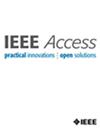中文命名实体识别的词音整合嵌入
IF 3.4
3区 计算机科学
Q2 COMPUTER SCIENCE, INFORMATION SYSTEMS
引用次数: 0
摘要
命名实体识别(NER)旨在从非结构化文本中自动提取特定实体。与英语的NER相比,汉语的NER面临着杂音的挑战,即同一个汉字可能有不同的发音和意义。此外,汉字之间缺乏明确的分隔符加剧了这些挑战,导致边界检测和实体类别确定困难。本研究以汉字的象形和语音特征为灵感,提出了一种多特征融合嵌入模型。该模型利用CNN提取汉字的词根和语音特征,将这些特征的编码信息与预训练好的词向量结合生成融合嵌入向量,并使用全连通层进行特征转换。在中文基准数据集Resume、Weibo和MSRA上进行了实验。与目前的主流模型相比,本文提出的模型在F1分数、F1分数稳定性和个体实体识别准确率方面都表现出了优异的性能。消融实验进一步验证了引入的词根和语音特征的有效性。实验结果表明,该模型有效地捕获了汉字的语义信息,解决了汉字异音问题,提高了实体识别性能。代码和数据集可在:https://github.com/FAKLITS/MP-NER本文章由计算机程序翻译,如有差异,请以英文原文为准。
MP-NER: Morpho-Phonological Integration Embedding for Chinese Named Entity Recognition
Named Entity Recognition (NER) aims to automatically extract specific entities from unstructured text. Compared with English NER, Chinese NER faces challenges due to heterophony, where the same Chinese character may have different pronunciations and meanings. Additionally, the lack of clear separators between Chinese characters exacerbates these challenges, leading to difficulties in boundary detection and entity category determination. Inspired by the hieroglyphic and phonetic features of Chinese characters, this study proposes a multi-feature fusion embedding model (MP-NER). The model employs CNN for extracting radicals and phonetic features of Chinese characters, combines the encoded information from these features with pre-trained word vectors to generate fusion embedding vectors, and uses a fully-connected layer for feature transformation. Experiments were conducted on the Chinese benchmark datasets Resume, Weibo and MSRA. Compared to current mainstream models, the proposed model demonstrates superior performance in terms of F1 score, F1 score stability, and individual entity recognition accuracy. Ablation experiments further validate the effectiveness of the introduced radicals and phonetic features. The experimental results demonstrate that this model effectively captures the semantic information of Chinese characters, addresses the problem of Chinese character heterophony, and improves entity recognition performance. The code and datasets available at: https://github.com/FAKLITS/MP-NER
求助全文
通过发布文献求助,成功后即可免费获取论文全文。
去求助
来源期刊

IEEE Access
COMPUTER SCIENCE, INFORMATION SYSTEMSENGIN-ENGINEERING, ELECTRICAL & ELECTRONIC
CiteScore
9.80
自引率
7.70%
发文量
6673
审稿时长
6 weeks
期刊介绍:
IEEE Access® is a multidisciplinary, open access (OA), applications-oriented, all-electronic archival journal that continuously presents the results of original research or development across all of IEEE''s fields of interest.
IEEE Access will publish articles that are of high interest to readers, original, technically correct, and clearly presented. Supported by author publication charges (APC), its hallmarks are a rapid peer review and publication process with open access to all readers. Unlike IEEE''s traditional Transactions or Journals, reviews are "binary", in that reviewers will either Accept or Reject an article in the form it is submitted in order to achieve rapid turnaround. Especially encouraged are submissions on:
Multidisciplinary topics, or applications-oriented articles and negative results that do not fit within the scope of IEEE''s traditional journals.
Practical articles discussing new experiments or measurement techniques, interesting solutions to engineering.
Development of new or improved fabrication or manufacturing techniques.
Reviews or survey articles of new or evolving fields oriented to assist others in understanding the new area.
 求助内容:
求助内容: 应助结果提醒方式:
应助结果提醒方式:


